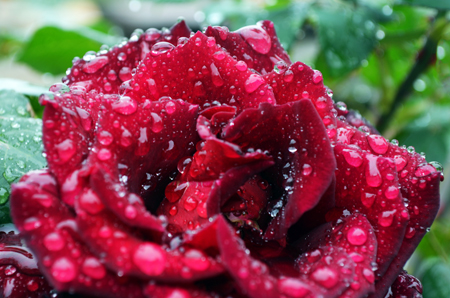Most photographers have been caught in the rain at some point. Those with a bit of experience usually carry some means of protecting themselves and their photographic equipment from water. Simple methods include the use of an umbrella, covering camera and lens with a plastic bag, or spreading a waterproof coat over everything. You might also choose to work from a car with the windows open. Such methods work to some extent and may give sufficient time to get the required shot before finding proper shelter. However, they are of no use when working under very wet conditions.
 |
| Public domain image by Skippy3E at freeimages.com |
In the most extreme conditions, such as during the Indian monsoon season, a camera and lens can be ruined in a matter of minutes. It is therefore worth considering protecting equipment with a lightweight underwater housing. Such items are not particularly expensive and give complete confidence that rain cannot penetrate to the expensive electronics. It is then possible to keep work in very heavy downpours providing the photographer can tolerate getting soaked! A less extreme alternative, that is also easier to carry around, is a plastic storm jacket that attaches to more or less any camera and lens combination using elastic bands. These are available from Vortex Media and other suppliers that may be found on the internet. However, they do not afford the degree of protection provided by a flexible underwater housing.
Keeping things dry is of course only the first consideration when shooting in extreme wet conditions. Another significant matter is how to show the heavy rain in the images. Rain soaks the ground and produces wonderful reflections on hard surfaces such as roads. Use these additional features in your images together with bits of your umbrella or whatever is being used to keep dry. It all helps to tell the story of the situation in which the images were captured. The rain drops themselves may tend to fade into a grey blur in many shots, so consider whether to freeze the falling drops with a high shutter speed or use backlighting or a little flash to make the rain more of a feature. Look for street lights, car lights or the sun emerging through dark clouds, and then shoot as directly in to the light source as possible.






